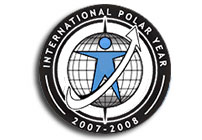 The International Council for Science (ICSU) and the World Meteorological Organisation (WMO) have devoted the period from 1st March 2007 until 1st March 2009 to the polar regions of the world. Arctic and Antarctic are in focus of a comprehensive scientific programme, which even stretches over two years this time – to give scientists the opportunity to conduct research in all seasons of the year on the northern and southern hemisphere.
The International Council for Science (ICSU) and the World Meteorological Organisation (WMO) have devoted the period from 1st March 2007 until 1st March 2009 to the polar regions of the world. Arctic and Antarctic are in focus of a comprehensive scientific programme, which even stretches over two years this time – to give scientists the opportunity to conduct research in all seasons of the year on the northern and southern hemisphere.
The International Polar Year is the forth broad event concerning the Polar Regions, after the first International Polar Year 1882/83 followed by the second one in 1932/33 and the International Geophysical Year 1957/58. Scientists from all over the world are involved in more than 200 interdisciplinary scientific programmes, particularly concerning climate research, physics and biology. But also cultural and social topics are addressed.
The International Polar Year motivated us to organize a lecture at the University of Vienna, public photo exhibitions, talks and discussions to inform and make people aware of arctic concerns.
The arctic regions include areas above the arctic circles and are home to over one million people. Despite their marginal position, the Polar Regions play in important global role considering the complex correlation between the climate and the marine ecosystem.
Alongside scientific research, expeditions and observation programmes in the Polar Regions, also the general public should be addressed and involved in activities around the International Polar Year. Lectures, conferences, or educational programmes inform about the Arctic and Antarctic, about land, ocean, ice and people.
Links:
official website dedicated to the Int. Polar Year 2007: http://www.ipy.org
Other relevant links to the history of the IPY:
http://www.arctic.noaa.gov/aro/ipy-1/History.htm


